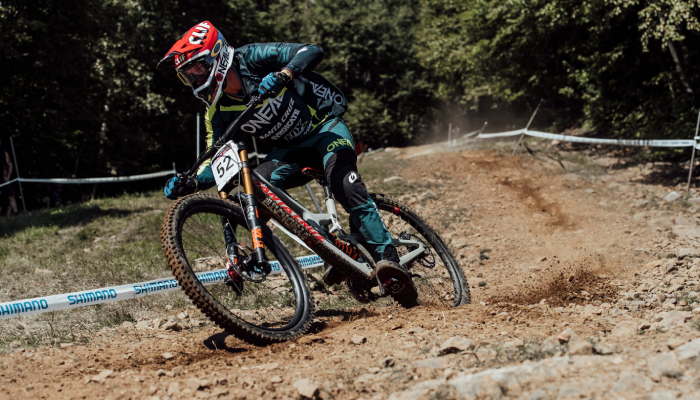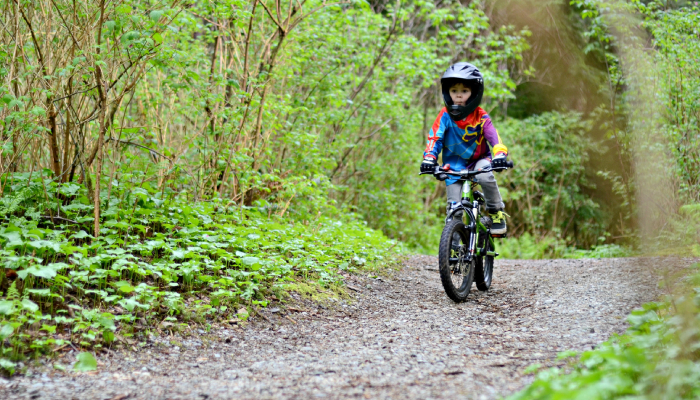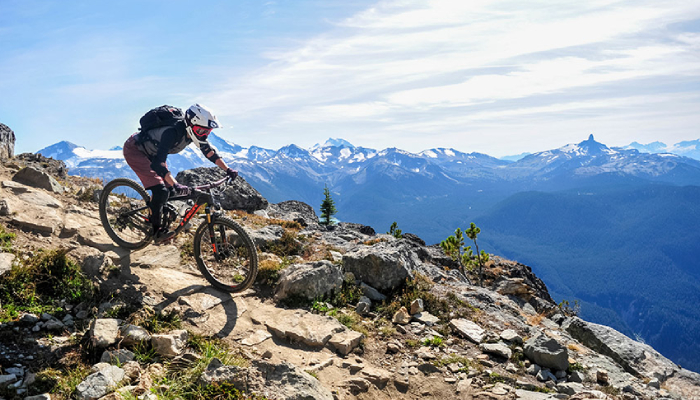Mountain Biking Safety Tips For A Safe Adventure

Tips To Choose The Ideal Gear For Your Mountain Bike
November 15, 2020
Mountain Biking Equipment For Beginner Bikers
November 30, 2020Gear up your safety with ten incredible mountain biking safety tips
The thrill of gliding past rugged terrain, the adrenaline rush, and the atonement of covering the desired destination- mountain biking is a wholesome package of excitement and healthy workout combined. However, the challenging terrains, loose, rutted, and slippery surfaces often make mountain biking a risky sport to practice. Apart from equipping your bikes with adequate features like knobby tires, good brakes, durable wheels, suspension forks, straight handlebars, and low gear-ratios, it is also imperative to be mindful of specific safety tips while embarking on a mountain biking adventure. This article takes you through ten must-know mountain biking safety tips essential for your biking venture.
Mountain biking- safety tips in a nutshell
Mountain biking trails are typically covered with loose dirt, rocks, roots, and steep grades that make the surfaces quite risky to ride a bike. Moreover, the trails are also laden with technical trail features like log rides, rock gardens, log piles, gas jumps, skinnies, and wallrides that make the sport more gripping and competitive. The bikes are usually equipped with features to tackle all these terrains and obstacles; and, riding downhill through all these obstacles gives the riders an enchanting experience. Follow these safety tips to enjoy your biking safely and comfortably.
- Make sure that your brakes are working fine.
- Ensure that your bike tires are inflated at least at 30-40psi, depending on your weight, terrain, and other conditions.
- Check whether the wheels and levers are tight and secure.
- Wear proper cycling gear; a helmet is a must accessory.
- Carry good snacks, water, a map, and GPS or compass in case you wander away.
- Pack spares such as inner tubes, pump, repair kit, and a basic tool kit.
- Ensure that you inform someone about your adventure and seek assistance from safety departments in case of serious accidents.
Safety practices to make your mountain biking experience hassle-free
Choose the right mountain bike.
Whether you are an avid biker or an occasional rider, ensure that the bike you choose provides you with utmost safety. Select a bike with the right frame size and have full suspension features that help reduce the bone ripping sensations during the downhill rides.
Safeguard your head with a helmet
The adventurous mountain biking comprises rough rides that often subject the inexperienced riders to stumble in their bike trails. The downhill rides are mostly accelerated, and riders are always at risk of tumbling down at high speeds & getting grievously injured. Injuries to the head and backbones can be fatal and may result in paralysis or permanent disability. Hence, make sure that you invest in the best headgear to safeguard your head.
Body armor for an added protection
The naturally rough terrains or technical trails that consist of various obstacles and jumps may require the bikers to protect themselves with full-body armor. A helmet, body armor, and neck braces might sound too cumbersome and uncomfortable; but to experience an adventurous ride, it is always better to be well prepared beforehand.
Pack your back with a first aid kit
If you think you are all set with a helmet and body armor, then ensure that you also pack your backpack with a first aid kit essentially. Injuries are prevalent in the challenging terrains and bumpy trails. Pack the first aid kit with antiseptic wipes, latex gloves, plasters, bandages, and pain killers to tackle the injury possibilities.
Wear gloves and sunglasses
Mountain terrains can be bumpy and cold. Warm yourself with gloves, an essential accessory to enhance your grip on the handlebars. The gloves can also protect you from injuries in case you fall off the bike. Similarly, the sunny days can be too harsh on your eyes. The sunglasses are an essential accessory to protect you from the glaring sun and from the flying debris & insects.
Right clothing
Donning perfect bike clothing is the best investment you would be making before venturing out into challenging terrains. With the effort put on pedaling incessantly over the mountain trails, it is a given that you might be drenched in sweat making your seating cramped. Hence, it is advised to purchase bike clothing with wickable base layers, mid-layers, and top layers for a waterproof ride. Shorts with padded seating are a welcome addition that can make your long ride smooth. SPD pedal system consists of cleats to clip your shoes into the pedals that provide an added safety.
Tools for maintenance
A well maintained and lubricated bike are crucial to ensure the best performance and keep the parts last longer. Ensure that you tag along with repair kits, pumps, and other tools to fix your bikes during mishaps.
Navigational tools
Accessorize your bike with a GPS or carry along a map and compass to not get lost in the mountains. Since the wooded mountains are scarcely waymarked, it is essential to carry a map along with your essentials kit.
Intake proper food and keep yourself well hydrated
Carry a hydration pack, which is typically a water reservoir fitted with drinking tubes with a capacity of at least 2 to 3 liters. Ensure that you are well hydrated along the entire stretch. Also, pack yourselves with high-energy foods like trail mix, bananas, or energy bars to satisfy the hunger pangs.




